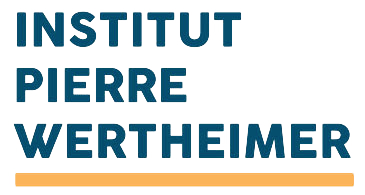Pr Emmanuel JOUANNEAU
Neurosurgery department – surgery of pituitary and skull base adenomas
Since 2014, at the instigation of Pr Jouanneau and at the request of the Hospices Civils de Lyon, our Neurosurgery department has been created with a single objective: to bring together the know-how of different medical and surgical specialties to improve patient adults care with intracranial tumours, especially those at the base of the skull.


Publications
1. Cranial and Cerebral Anatomic Key Points for Neurosurgery: A New Educational Insight
Simon E, Beuriat PA, Delabar V, Jouanneau E, Fernandez-Miranda J, Jacquesson T
Oper Neurosurg (Hagerstown) (2022) — Abstract
Background: The anatomy of both the skull and the brain offers many landmarks that could lead surgery. Cranial “craniometric” key points were described many years ago, and then, cerebral key points-along sulci and gyri-were detailed more recently for microneurosurgical approaches that can reach deep structures while sparing the brain. Nonetheless, this anatomic knowledge is progressively competed by new digital devices, such as imaging guidance systems, although they can be misleading. Objective: To summarize cranial and sulcal key points and their related anatomic structures to renew their interest in modern neurosurgery and help surgical anatomy teaching. Methods: After a literature review collecting anatomic key points of skull and brain, specimens were prepared and images were taken to expose skull and brain from lateral, superior, posterior, and oblique views. A high-definition camera was used, and images obtained were modified, superimposing both key points and underlying anatomic structures. Results: From 4 views, 16 cranial key points were depicted: anterior and superior squamous point, precoronal and retrocoronal point, superior sagittal point, intraparietal point, temporoparietal point, preauricular point, nasion, bregma, stephanion, euryon, lambda, asterion, opisthocranion, and inion. These corresponded to underlying cerebral key points and relative brain parts: anterior and posterior sylvian point, superior and inferior rolandic point, supramarginal and angular gyri, parieto-occipital sulcus, and various meeting points between identifiable sulci. Stereoscopic views were also provided to help learning these key points. Conclusion: This comprehensive overview of the cranial and sulcal key points could be a useful tool for any neurosurgeon who wants to check her/his surgical route and make the surgery more gentle, safe, and accurate.
2. Immunotherapy in aggressive pituitary tumors and carcinomas: a systematic review
Ilie MD, Vasiljevic A, Jouanneau E, Raverot G
Endocr Relat Cancer (2022) — Abstract
Once temozolomide has failed, there is no recommended treatment option for pituitary carcinomas and aggressive pituitary tumors. Immune-checkpoint inhibitors (ICIs) represent the most recent therapeutic avenue, having raised hope with the publication of the first successful case in 2018. Here, we present an overview of immunotherapy in pituitary carcinomas and aggressive pituitary tumors, starting with the rationale for using ICIs and the implications of tumor-infiltrating lymphocytes in anterior pituitary tumors, followed by a systematic review of all published cases, analyzing both treatment response and potential predictors of response and finishing with research and clinical perspectives. Seven corticotroph and four lactotroph tumors have been so far treated with ICIs. Corticotroph tumors showed radiological partial response in 57% of cases, followed by stable disease in 29% of cases, which was accompanied by biochemical partial or complete response in 83% of cases. Half of lactotroph tumors showed radiological complete or partial response, accompanied by biochemical complete response in 33% of the cases. In the case of a dissociate response, continuation of immunotherapy combined with local treatment represents a good option. At this time, a high tumor mutational burden appears to be the most promising predictive marker of response. MMR deficiency does not guarantee a response. Negative PD-L1 staining should not preclude ICIs administration. Therefore, ICIs are a promising option after temozolomide failure. This review highlights key clinical aspects that can already be implemented into practice and also discusses tumor biology concepts and perspectives expected to improve immunotherapy outcomes.
3. Management of non-vestibular schwannomas in adult patients: a systematic review and consensus statement on behalf of the EANS skull base section. Part I: oculomotor and other rare non-vestibular schwannomas (I, II, III, IV, VI)
Bal J, Bruneau M, Berhouma M, Cornelius JF, Cavallo LM, Daniel RT, Froelich S, Jouanneau E, Meling TR, Messerer M, Roche PH, Schroeder HWS, Tatagiba M, Zazpe I, Paraskevopoulos D
Acta Neurochir (Wien) (2022) — Abstract
Background: Non-vestibular schwannomas are relatively rare, with trigeminal and jugular foramen schwannomas being the most common. This is a heterogeneous group which requires detailed investigation and careful consideration to management strategy. The optimal management for these tumours remains unclear, and there are several controversies. The aim of this paper is to provide insight into the main principles defining management and surgical strategy, in order to formulate a series of recommendations. Methods: A task force was created by the EANS skull base section along with its members and other renowned experts in the field to generate recommendations for the surgical management of these tumours on a European perspective. To achieve this, the task force performed an extensive systematic review in this field and had discussions within the group. This article is the first of a three-part series describing non-vestibular schwannomas (I, II, III, IV, VI). Results: A summary of literature evidence was proposed after discussion within the EANS skull base section. The constituted task force dealt with the practice patterns that exist with respect to pre-operative radiological investigations, ophthalmological assessments, optimal surgical and radiotherapy strategies and follow-up management. Conclusion: This article represents the consensually derived opinion of the task force with respect to the treatment of non-vestibular schwannomas. For each of these tumours, the management of these patients is complex, and for those which are symptomatic tumours, the paradigm is shifting towards the compromise between function preservation and progression-free survival.
4. Aggressive pituitary neuroendocrine tumors: current practices, controversies, and perspectives, on behalf of the EANS skull base section
Ng S, Messerer M, Engelhardt J, Bruneau M, Cornelius JF, Cavallo LM, Cossu G, Froelich S, Meling TR, Paraskevopoulos D, Schroeder HWS, Tatagiba M, Zazpe I, Berhouma M, Daniel RT, Laws ER, Knosp E, Buchfelder M, Dufour H, Gaillard S, Jacquesson T, Jouanneau E
Acta Neurochir (Wien) (2021) — Abstract
Aggressive pituitary neuroendocrine tumors (APT) account for 10% of pituitary tumors. Their management is a rapidly evolving field of clinical research and has led pituitary teams to shift toward a neuro-oncological-like approach. The new terminology “Pituitary neuroendocrine tumors” (PitNet) that was recently proposed to replace “pituitary adenomas” reflects this change of paradigm. In this narrative review, we aim to provide a state of the art of actual knowledge, controversies, and recommendations in the management of APT. We propose an overview of current prognostic markers, including the recent five-tiered clinicopathological classification. We further establish and discuss the following recommendations from a neurosurgical perspective: (i) surgery and multi-staged surgeries (without or with parasellar resection in symptomatic patients) should be discussed at each stage of the disease, because it may potentialize adjuvant medical therapies; (ii) temozolomide is effective in most patients, although 30% of patients are non-responders and the optimal timeline to initiate and interrupt this treatment remains questionable; (iii) some patients with selected clinicopathological profiles may benefit from an earlier local radiotherapy and/or chemotherapy; (iv) novel therapies such as VEGF-targeted therapies and anti-CTLA-4/anti-PD1 immunotherapies are promising and should be discussed as 2nd or 3rd line of treatment. Finally, whether neurosurgeons have to operate on “pituitary adenomas” or “PitNets,” their role and expertise remain crucial at each stage of the disease, prompting our community to deal with evolving concepts and therapeutic resources.
5. Aggressive Pituitary Adenomas and Carcinomas
Ilie MD, Jouanneau E, Raverot G
Endocrinol Metab Clin North Am (2020) — Abstract
Aggressive pituitary tumors (APT) refer to pituitary adenomas exhibiting radiological invasiveness and an unusually rapid tumor growth rate, or clinically relevant tumor growth despite optimal standard treatments, with abandonment of the previous term ‘atypical pituitary adenoma’. Pituitary carcinomas (PC) are defined by non-contiguous craniospinal or distant metastasis. Whilst PC is exceedingly rare, comprising only 0.1-0.4% of all pituitary neoplasms, APT may account for up to 15% of all pituitary neoplasms, depending on the definition used. Typically evolving from a known pituitary macroadenomas, APT/PC is most commonly diagnosed in the fifth decade of life with corticotroph and lactotroph neoplasms predominating. Diagnosis relies on MRI, hormonal studies, and histological assessment including proliferative markers and immunohistochemistry for pituitary hormones and, most recently, transcription factors. Structural and molecular mechanisms have been proposed in the pathogenesis of APT/PC, although there appears to be no contribution from known familial pituitary tumor syndrome genes such as MEN1. Treatment is multimodal, ideally delivered by an expert team with a high-volume caseload. Surgical resection may be performed with the aim of either gross total resection or tumor debulking. Radiotherapy may be administered either as fractionated external beam radiation or stereotactic radiosurgery. Standard pituitary medical therapies such as somatostatin analogues have limited efficacy in APT/PC, whereas temozolomide yields a clear survival benefit. Evidence is emerging for the use of peptide receptor radionuclide therapy, tyrosine kinase inhibitors, VEGF inhibitors, and immunotherapy. Avenues for further research in APT/PC include molecular biomarkers, nuclear imaging, establishment of an international register, and routine pituitary tumor biobanking. For complete coverage of all related areas of Endocrinology, please visit our on-line FREE web-text, WWW.ENDOTEXT.ORG.
6. Surgical management of Tuberculum sellae Meningiomas: Myths, facts, and controversies
Giammattei L, Starnoni D, Cossu G, Bruneau M, Cavallo LM, Cappabianca P, Meling TR, Jouanneau E, Schaller K, Benes V, Froelich S, Berhouma M, Messerer M, Daniel RT.
Acta Neurochir (Wien) (2020) — Abstract
Background: The optimal management of tuberculum sellae (TS) meningiomas, especially the surgical strategy, continues to be debated along with several controversies that persist. Methods: A task force was created by the EANS skull base section committee along with its members and other renowned experts in the field to generate recommendations for the surgical management of these tumors on a European perspective. To achieve this, the task force also reviewed in detail the literature in this field and had formal discussions within the group. Results: The constituted task force dealt with the practice patterns that exist with respect to pre-operative radiological investigations, ophthalmological and endocrinological assessments, optimal surgical strategies, and follow-up management. Conclusion: This article represents the consensually derived opinion of the task force with respect to the surgical treatment of tuberculum sellae meningiomas. Areas of uncertainty where further clinical research is required were identified. Keywords: Craniotomy; Extended endoscopic transsphenoidal approach; Minimally invasive neurosurgery; Pituitary function; Skull base; Suprasellar; Surgical technique; Tuberculum sellae meningiomas; Visual outcome.
7. Current status and treatment modalities in metastases to the pituitary: a systematic review
Ng S, Fomekong F, Delabar V, Jacquesson T, Enachescu C, Raverot G, Manet R, Jouanneau E
J Neurooncol (2020) — Abstract
Background: Metastases to the pituitary (MP) are uncommon, accounting for 0.4% of intracranial metastases. Through advances in neuroimaging and oncological therapies, patients with metastatic cancers are living longer and MP may be more frequent. This review aimed to investigate clinical and oncological features, treatment modalities and their effect on survival. Methods: A systematic review was performed according to PRISMA recommendations. All cases of MP were included, excepted primary pituitary neoplasms and autopsy reports. Descriptive and survival analyses were then conducted. Results: The search identified 2143 records, of which 157 were included. A total of 657 cases of MP were reported, including 334 females (50.8%). The mean ± standard deviation age was 59.1 ± 11.9 years. Lung cancer was the most frequent primary site (31.0%), followed by breast (26.2%) and kidney cancers (8.1%). Median survival from MP diagnosis was 14 months. Overall survival was significantly different between lung, breast and kidney cancers (P < .0001). Survival was impacted by radiotherapy (hazard ratio (HR) 0.49; 95% confidence interval (CI) 0.35-0.67; P < .0001) and chemotherapy (HR 0.58; 95% CI 0.36-0.92; P = .013) but not by surgery. Stereotactic radiotherapy tended to improve survival over conventional radiotherapy (HR 0.66; 95% CI 0.39-1.12; P = .065). Patients from recent studies (≥ 2010) had longer survival than others (HR 1.36; 95% CI 1.05-1.76; P = .0019). Conclusion: This systematic review based on 657 cases helped to better identify clinical features, oncological characteristics and the effect of current therapies in patients with MP. Survival patterns were conditioned upon primary cancer histologies, the use of local radiotherapy and systemic chemotherapy, but not by surgery.
8. Surgical management of craniopharyngiomas in adult patients: a systematic review and consensus statement on behalf of the EANS skull base section..
Cossu G, Jouanneau E, Cavallo LM, Elbabaa SK, Giammattei L, Starnoni D, Barges-Coll J, Cappabianca P, Benes V, Baskaya MK, Bruneau M, Meling T, Schaller K, Chacko AG, Youssef AS, Mazzatenta D, Ammirati M, Dufour H, Laws E, Berhouma M, Daniel RT, Messerer M
Acta Neurochir (Wien) (2020) — Abstract
Background and objective: Craniopharyngiomas are locally aggressive neuroepithelial tumors infiltrating nearby critical neurovascular structures. The majority of published surgical series deal with childhood-onset craniopharyngiomas, while the optimal surgical management for adult-onset tumors remains unclear. The aim of this paper is to summarize the main principles defining the surgical strategy for the management of craniopharyngiomas in adult patients through an extensive systematic literature review in order to formulate a series of recommendations. Material and methods: The MEDLINE database was systematically reviewed (January 1970-February 2019) to identify pertinent articles dealing with the surgical management of adult-onset craniopharyngiomas. A summary of literature evidence was proposed after discussion within the EANS skull base section. Results: The EANS task force formulated 13 recommendations and 4 suggestions. Treatment of these patients should be performed in tertiary referral centers. The endonasal approach is presently recommended for midline craniopharyngiomas because of the improved GTR and superior endocrinological and visual outcomes. The rate of CSF leak has strongly diminished with the use of the multilayer reconstruction technique. Transcranial approaches are recommended for tumors presenting lateral extensions or purely intraventricular. Independent of the technique, a maximal but hypothalamic-sparing resection should be performed to limit the occurrence of postoperative hypothalamic syndromes and metabolic complications. Similar principles should also be applied for tumor recurrences. Radiotherapy or intracystic agents are alternative treatments when no further surgery is possible. A multidisciplinary long-term follow-up is necessary.
9. Surgical management for large vestibular schwannomas: a systematic review, meta-analysis, and consensus statement on behalf of the EANS skull base section
Starnoni D, Giammattei L, Cossu G, Link MJ, Roche PH, Chacko AG, Ohata K, Samii M, Suri A, Bruneau M, Cornelius JF, Cavallo L, Meling TR, Froelich S, Tatagiba M, Sufianov A, Paraskevopoulos D, Zazpe I, Berhouma M, Jouanneau E, Verheul JB, Tuleasca C, George M, Levivier M, Messerer M, Daniel RT
Acta Neurochir (Wien) (2020) — Abstract
Background and objective: The optimal management of large vestibular schwannomas continues to be debated. We constituted a task force comprising the members of the EANS skull base committee along with international experts to derive recommendations for the management of this problem from a European perspective. Material and methods: A systematic review of MEDLINE database, in compliance with the PRISMA guidelines, was performed. A subgroup analysis screening all surgical series published within the last 20 years (January 2000 to March 2020) was performed. Weighted summary rates for tumor resection, oncological control, and facial nerve preservation were determined using meta-analysis models. This data along with contemporary practice patterns were discussed within the task force to generate consensual recommendations regarding preoperative evaluations, optimal surgical strategy, and follow-up management. Results: Tumor classification grades should be systematically used in the perioperative management of patients, with large vestibular schwannomas (VS) defined as > 30 mm in the largest extrameatal diameter. Grading scales for pre- and postoperative hearing (AAO-HNS or GR) and facial nerve function (HB) are to be used for reporting functional outcome. There is a lack of consensus to support the superiority of any surgical strategy with respect to extent of resection and use of adjuvant radiosurgery. Intraoperative neuromonitoring needs to be routinely used to preserve neural function. Recommendations for postoperative clinico-radiological evaluations have been elucidated based on the surgical strategy employed. Conclusion: The main goal of management of large vestibular schwannomas should focus on maintaining/improving quality of life (QoL), making every attempt at facial/cochlear nerve functional preservation while ensuring optimal oncological control, thereby allowing to meet patient expectations. Despite the fact that this analysis yielded only a few Class B evidences and mostly expert opinions, it will guide practitioners to manage these patients and form the basis for future clinical trials.

